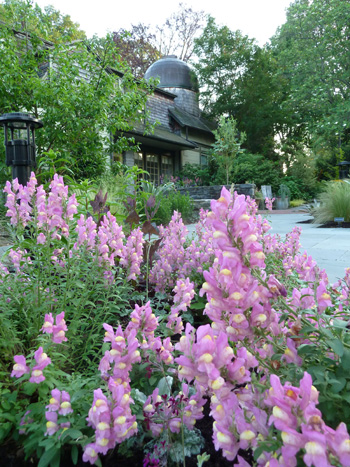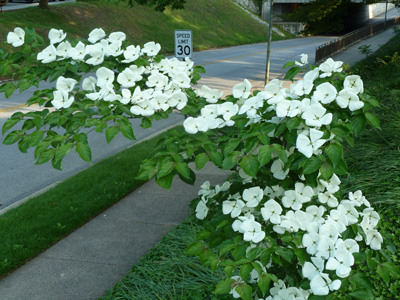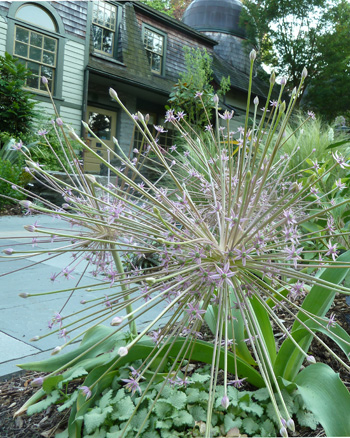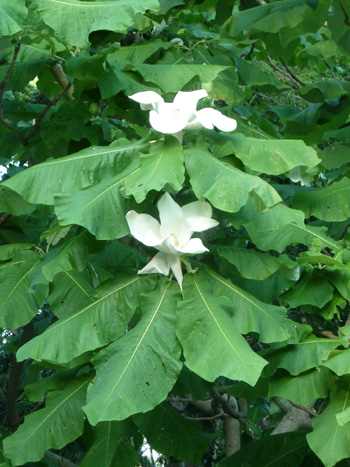Plants of the Week: June 3
 Antirrhinum hispanicum, the Spanish snapdragon, has been garnering quite a bit of attention lately. The flowers bear the classic look of a snapdragon but the habit coupled with silvery pubescent foliage is atypical of the quintessential cottage garden cut flower. Plants were purchased from Plant Delights Nursery, Inc. who received specimens from the JC Raulston Arboretum. Plant Delights describes the perennial as “a 1′ tall x 2′ wide clump of fuzzy grey-green leaves, topped all summer with spikes of pink and yellow bicolor flowers. Antirrhinum hispanicum thrives in our hot, humid summers where most snapdragons fear to tread. Antirrhinum hispanicum prefers a baking hot, well-drained sunny site.” Yes, they are indeed perennial. I find the plants do get a bit leggy and benefit from a cutback after the initial flush of flowers. Quickly becoming one of my favorite plants! Photo credit: J. Coceano
Antirrhinum hispanicum, the Spanish snapdragon, has been garnering quite a bit of attention lately. The flowers bear the classic look of a snapdragon but the habit coupled with silvery pubescent foliage is atypical of the quintessential cottage garden cut flower. Plants were purchased from Plant Delights Nursery, Inc. who received specimens from the JC Raulston Arboretum. Plant Delights describes the perennial as “a 1′ tall x 2′ wide clump of fuzzy grey-green leaves, topped all summer with spikes of pink and yellow bicolor flowers. Antirrhinum hispanicum thrives in our hot, humid summers where most snapdragons fear to tread. Antirrhinum hispanicum prefers a baking hot, well-drained sunny site.” Yes, they are indeed perennial. I find the plants do get a bit leggy and benefit from a cutback after the initial flush of flowers. Quickly becoming one of my favorite plants! Photo credit: J. Coceano
Garden location: Entrance Garden
 The sight of Cornus VenusTM in all its full flowering glory was too irresistible as I drove past a specimen blooming between Kemp Dormitory and Route 320. I had to capture an image! I hung a hard left and drove through Swarthmore, wrapped around the SEPTA station and headed back toward the tree. Yes, the plant was that majestic. Cornus VenusTM ‘KN30-8’ is part of the Jersey Star® series developed by Rutgers University. The hybrid is noted for its large white bracts, winter hardiness, and high resistance to powdery mildew and dogwood anthracnose. Season after season this plant never fails to steal my attention. Photo credit: J. Coceano
The sight of Cornus VenusTM in all its full flowering glory was too irresistible as I drove past a specimen blooming between Kemp Dormitory and Route 320. I had to capture an image! I hung a hard left and drove through Swarthmore, wrapped around the SEPTA station and headed back toward the tree. Yes, the plant was that majestic. Cornus VenusTM ‘KN30-8’ is part of the Jersey Star® series developed by Rutgers University. The hybrid is noted for its large white bracts, winter hardiness, and high resistance to powdery mildew and dogwood anthracnose. Season after season this plant never fails to steal my attention. Photo credit: J. Coceano
Garden Location: Gold Medal Garden near Kemp and Alice Paul Dormitories
 Allium flowers as a whole tend to be symmetrical spheres, their symmetry and form adding character and contrast to the garden. Then there is Allium schubertii. Intent on standing out from its kin, A. schubertii creates bowling ball-size flower spikes composed of rosy-purple florets borne on stalks of unequal lengths. The result is a plant easily fitting into an extraterrestrial or Dr. Seuss landscape – a fun, critter-proof bulb sure to delight and intrigue. Photo credit: J. Coceano
Allium flowers as a whole tend to be symmetrical spheres, their symmetry and form adding character and contrast to the garden. Then there is Allium schubertii. Intent on standing out from its kin, A. schubertii creates bowling ball-size flower spikes composed of rosy-purple florets borne on stalks of unequal lengths. The result is a plant easily fitting into an extraterrestrial or Dr. Seuss landscape – a fun, critter-proof bulb sure to delight and intrigue. Photo credit: J. Coceano
Garden location: Nason Garden, Entrance Garden
 Magnolia macrophylla, the big leaf magnolia, lives up to its name bearing leaves capable of reaching 1’ wide and 3’ long. Solitary flowers, fragrant and creamy-white in color, are borne on terminal end of branches. Trees mature at 30’ – 40’ in height. Excluding palms, M. macrophylla sports the largest leaves and flowers of any native North American species. Photo credit: J. Coceano
Magnolia macrophylla, the big leaf magnolia, lives up to its name bearing leaves capable of reaching 1’ wide and 3’ long. Solitary flowers, fragrant and creamy-white in color, are borne on terminal end of branches. Trees mature at 30’ – 40’ in height. Excluding palms, M. macrophylla sports the largest leaves and flowers of any native North American species. Photo credit: J. Coceano
Garden location: photo taken of tree near Cunningham parking lot tennis courts





No Comments